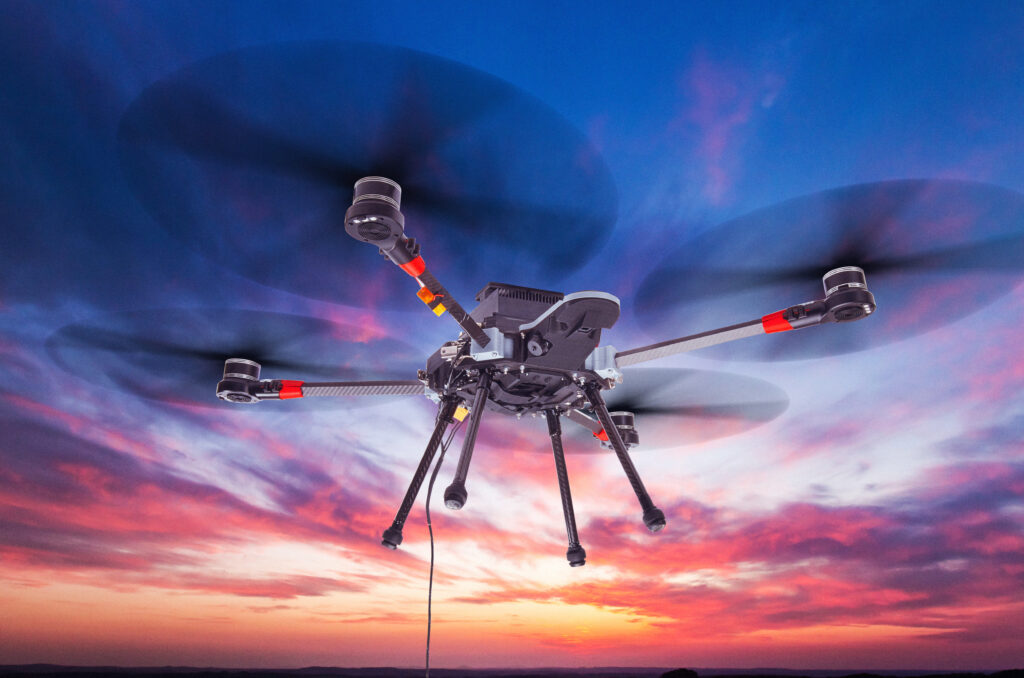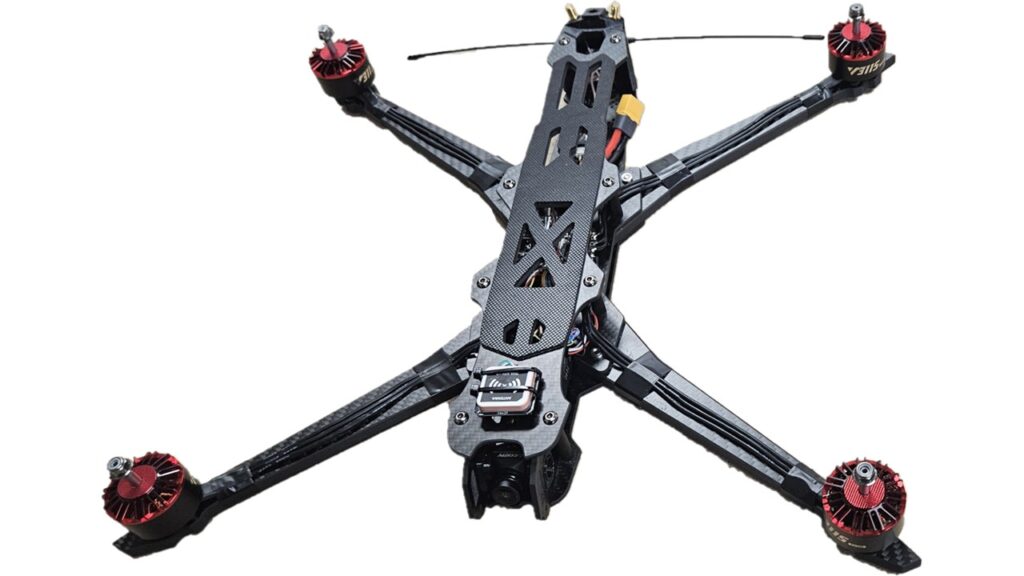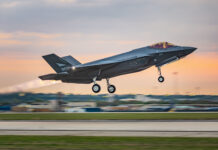Caerphilly-based Drone Evolution is looking to address both the battlefield needs of Ukraine and the recently published UK Strategic Defence Review’s focus on ‘consumable’ effectors to provide user-focused first-person-view (FPV) drones that are made in the UK, tested in theatre and work straight out of the box.
After initially making tethered systems for unmanned aerial vehicles (UAVs) provided by other manufacturers to mainly address the civilian market, at the DSEI exhibition in London in September 2023 Drone Evolution launched its first home-grown UAV: the tethered Sentinel system, which offers a portable, long-endurance capability that can be used for intelligence, surveillance and reconnaissance (ISR) missions, as a rebroadcasting node for communications or as a platform for electronic warfare sensors.
However, the requirements of the war in Ukraine took the company in a new direction, as Toby Townrow, Drone Evolution’s business development director, explained to ESD during an exclusive interview on 23 June 2025.

While some Chinese components – such as those used by Western companies for telecommunications systems – have prompted security concerns, Townrow explained that for Drone Evolution local sourcing is all about security of supply.
“If somebody says, ‘I need these and I need them now’, then we can get them because we have them; we don’t have to ring up a friendly person in China and then hope that [certain components] turn up on time,” he said. “It’s more about making sure that you can get these things in quantity when you need them. If you’ve got to rely on China as the only supplier, that leaves you with a weakness in your supply chain.”
Although Townrow noted that one issue that came out of the Strategic Defence Review, published on 2 June 2025, is that sovereign capability is going to be really important for numerous reasons, including supporting UK small and medium enterprises, he reiterated that security of supply remains the main driver.
“If somebody said tomorrow, ‘Can you get 10,000 flight controllers?’, I don’t have to ring a supplier; I can just say yes. And that is a key difference: massive,” he said.
While Drone Evolution’s UAVs currently still use Chinese engines and GPS systems, Townrow noted that the company has its own batteries, radios, frames and most crucially its own flight controller: the drone’s ‘brain’ that encompasses the flight control software and controls the engines. The ultimate goal, he added, is to eliminate all Chinese components completely.
Drone Evolution’s FPV drone range, called Scimitar, includes quadcopters with propeller radii of 7, 10, 13 and 15 inches (178, 243, 330 and 381 mm), with the 10-inch drone, for example, able to carry up to 7 kg for 5 km or, using a second battery, a 3 kg payload out to 25 km.

“Digital is on or off. If you suffer a bit of interference or whatever, the digital signal goes, it’s off,” Townrow explained, “whereas with analogue you might still be able to make out where you’re going and [have enough signal] to bring it back under control, so that’s why Ukrainians are using analogue. It’s almost like taking a backward step, but it works in terms of what they use it for.”
Such is Drone Evolution’s focus on the user that the company puts its systems in the hands of Ukrainian operators and even has a former Ukrainian FPV pilot as an employee. “We’ve had systems tested in Ukraine. We’ve had Ukrainian pilots use it. We can get across the lessons of Ukraine and how it’s done in Ukraine, and we can show people that,” said Townrow. “We did a demonstration last week with some Ukrainian FPV pilots and they were very happy with it as a product, straight out the box.”
As far as addressing the potential FPV requirements of the UK Ministry of Defence (MoD), Townrow said that the demand “really is for certainly European- if not British-based product that works in the rain, can work in decent winds and have a decent payload capacity”, adding that, in terms of the company’s marketing progress, “We’ve got an area of MoD that is taking a punt and getting some kit in.”
Beyond marketing to the UK MoD, meanwhile, Drone Evolution is also looking to the Middle East, East European countries such as Poland, Finland and the Baltic states and possibly also East Asian markets as well as Australia.











